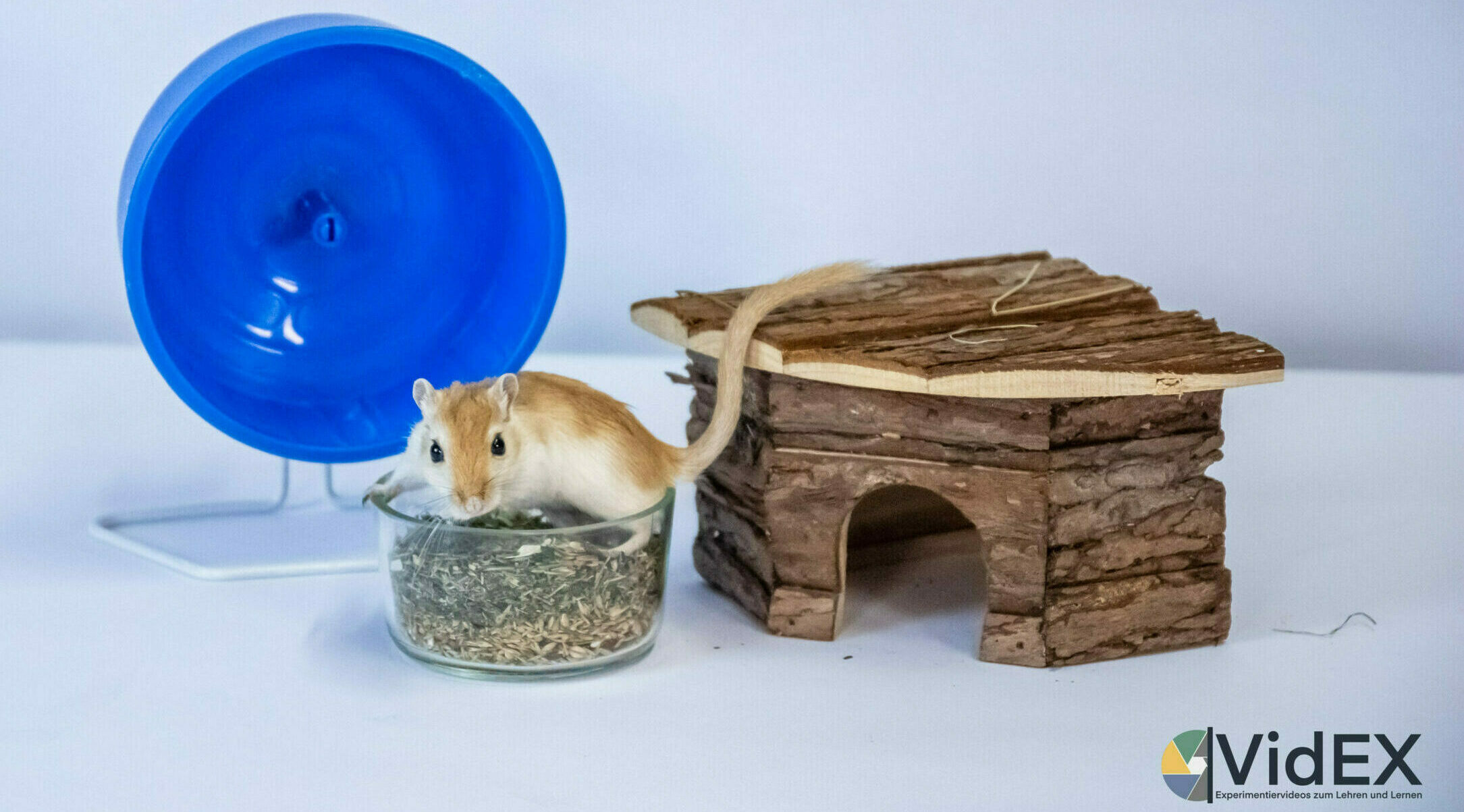
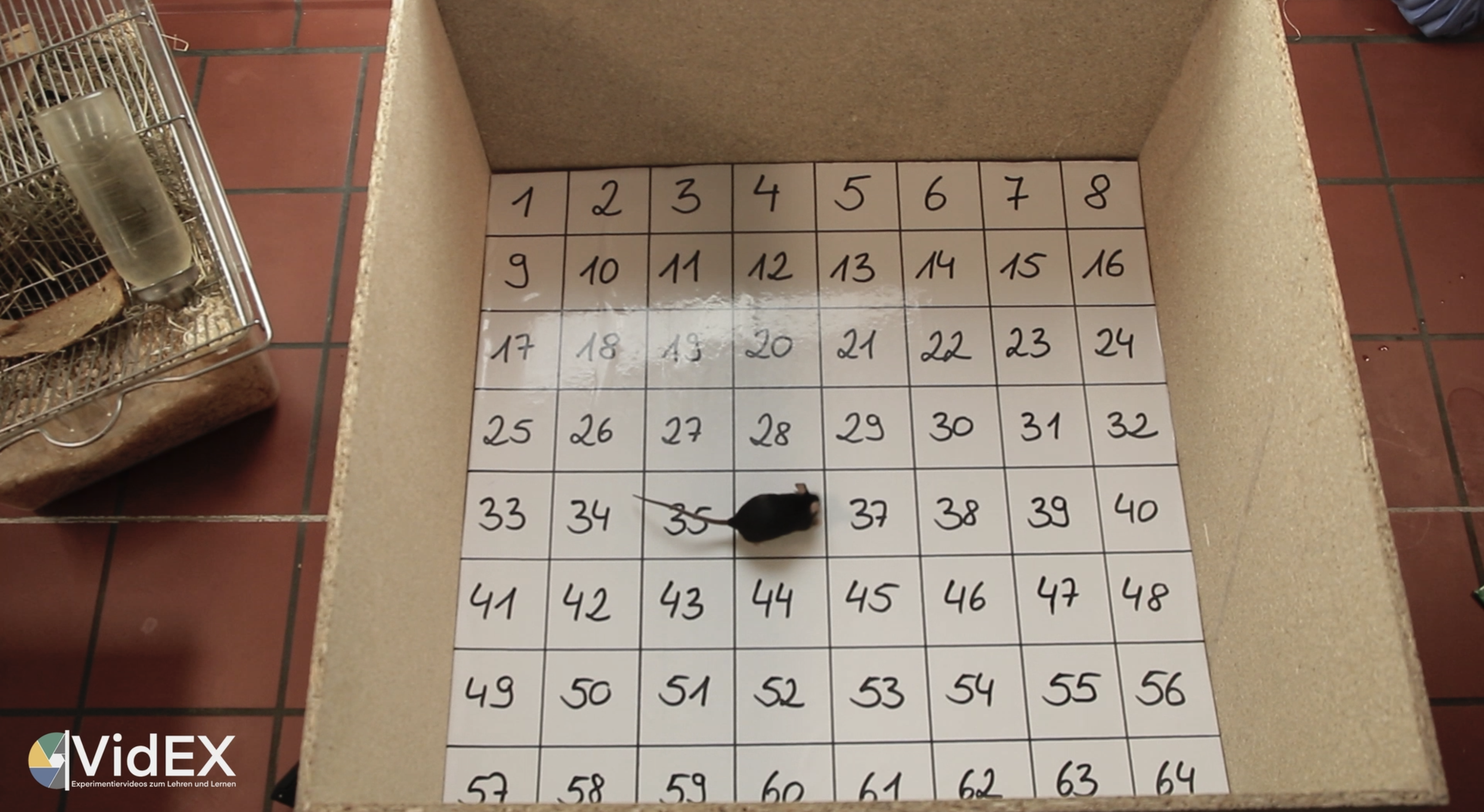
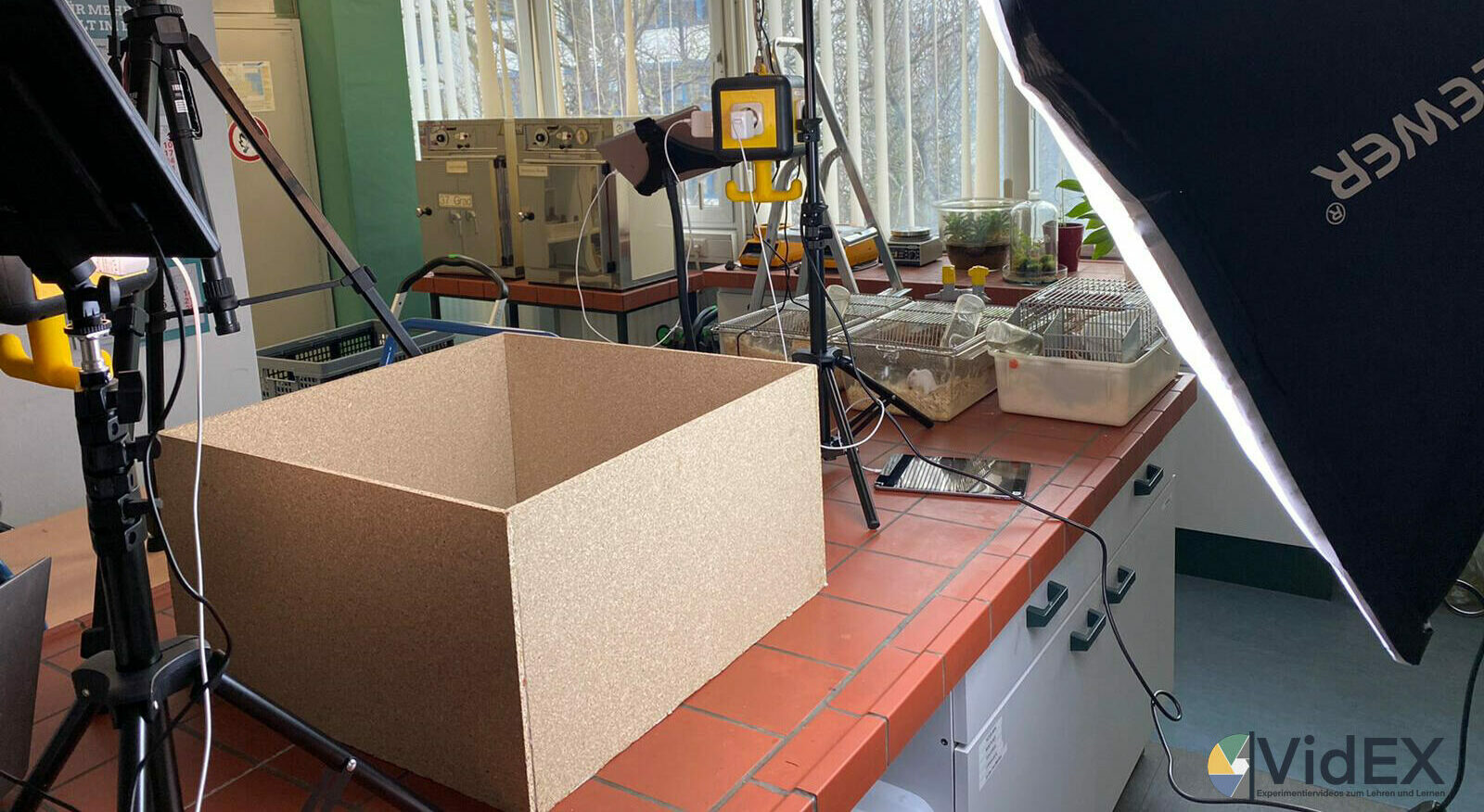
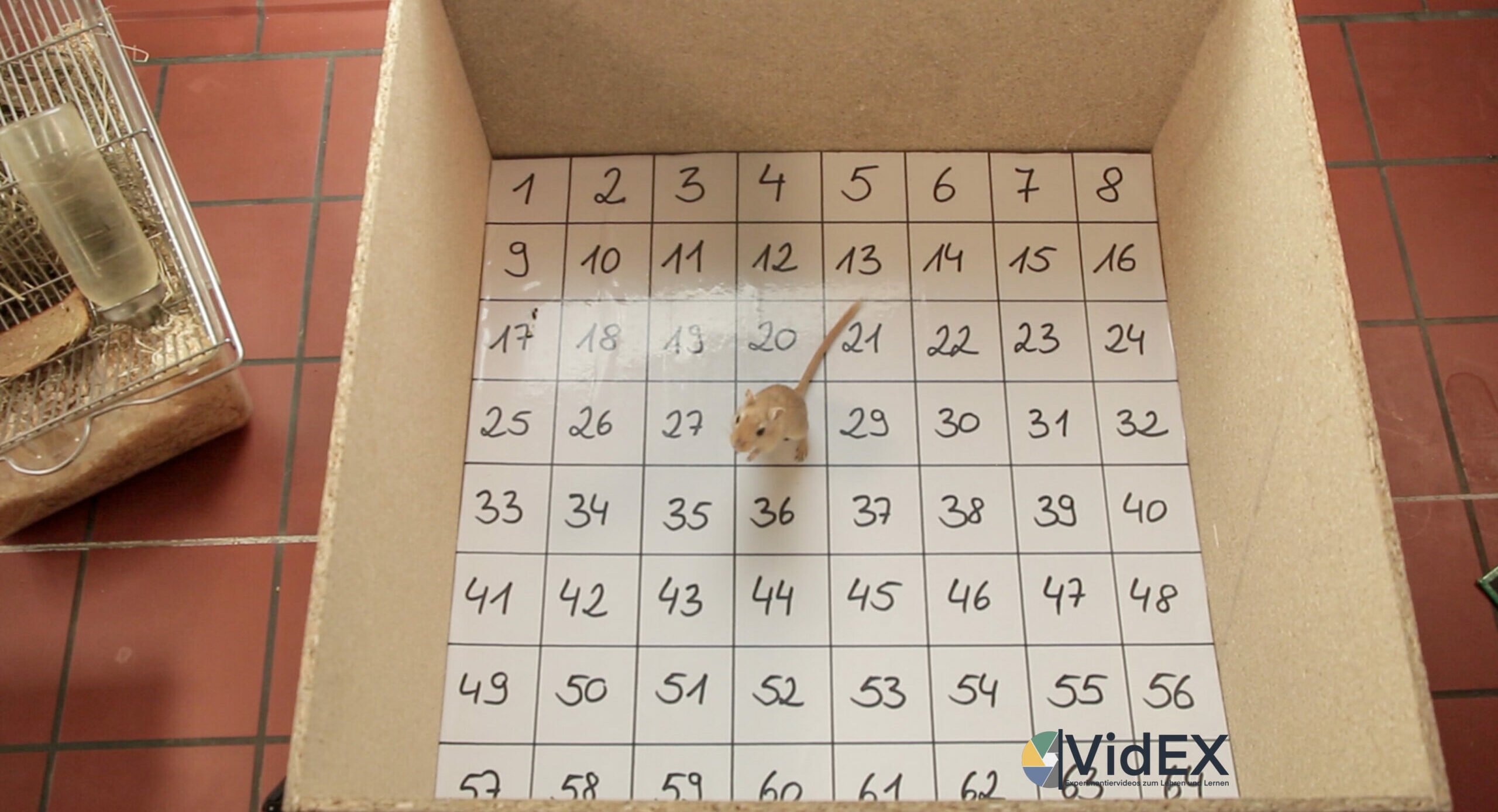
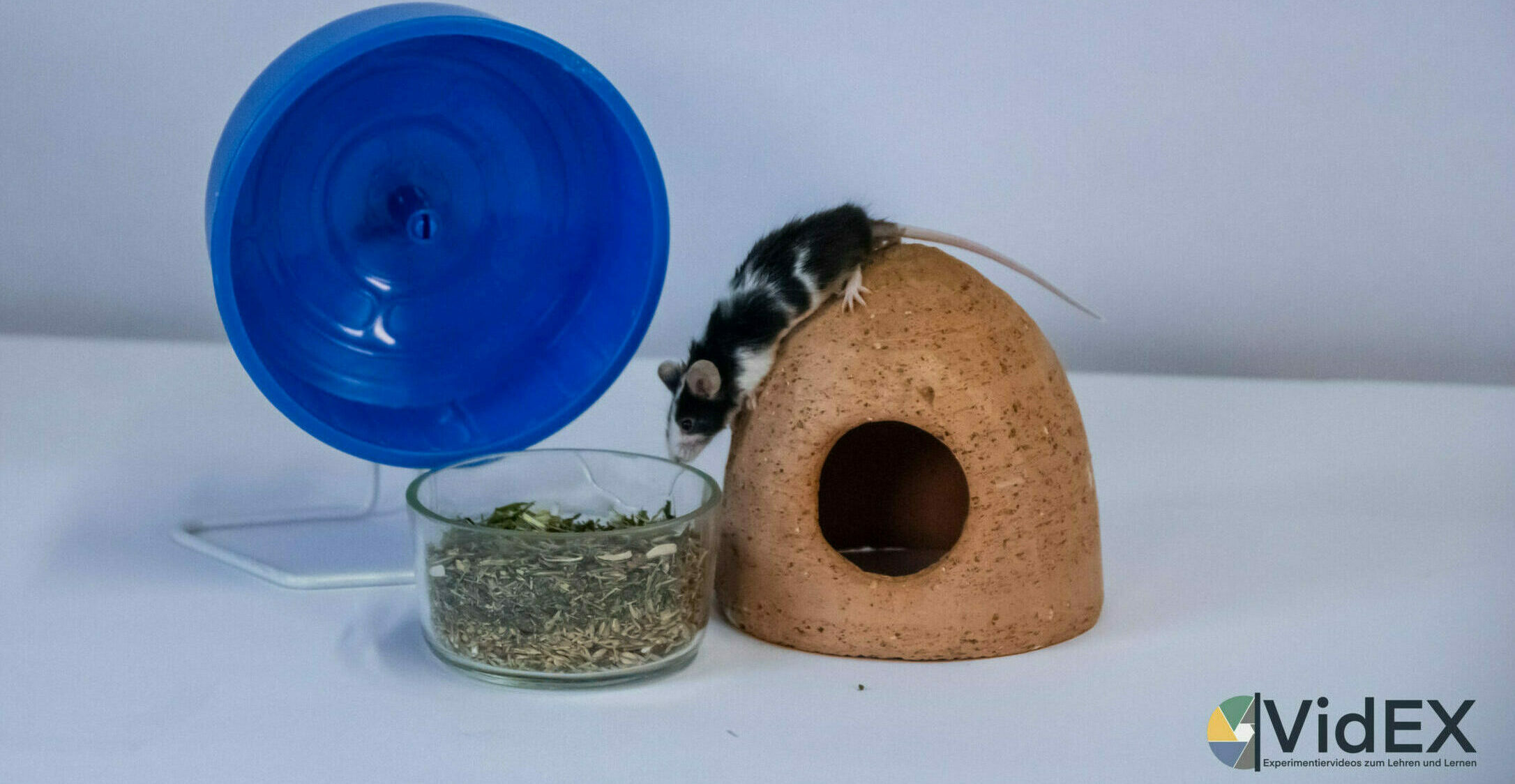
A wide range of behaviours to protect themselves from their respective predator can be observed in prey animals. This includes, for example, time-depending habitat use (e.g. day or night activity) as well as limited spatial habitat use, as shown by house mice (Mus musculus), among others. In this module, students get the opportunity to observe different mouse species in a laboratory situation, collect and process data in order to draw conclusions about innate protective behaviour.
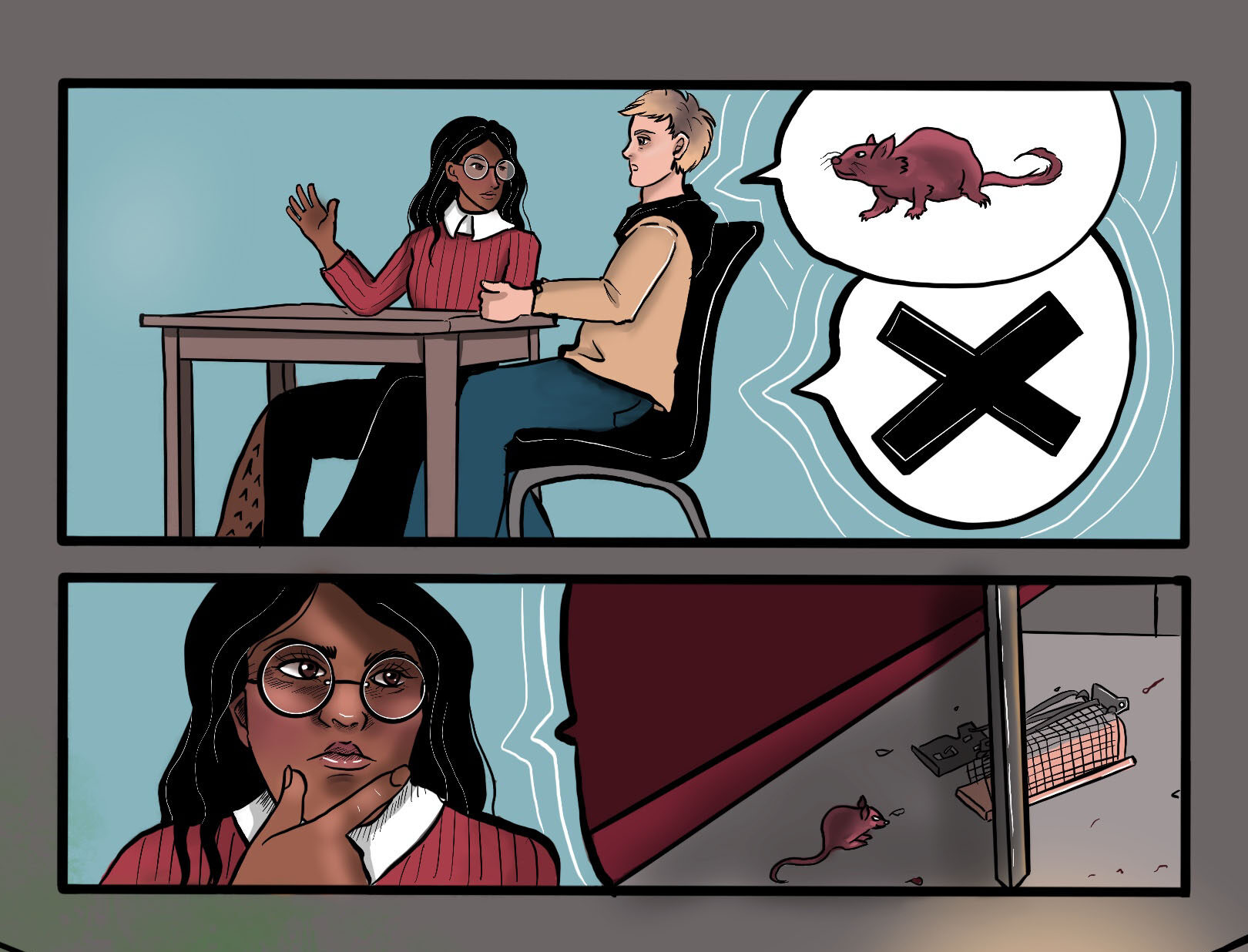
Comic by Lisa Reinhardt, 2022, https://bunterstofffetzen.jimdofree.com CC BY-NC-ND
The natural enemies of the house mouse include cats, foxes and reptiles, but also birds of prey or humans. We often use traps to catch these unwelcome guests in the attic or basement. This leads us to the question of where the traps should be placed to catch the mice with the highest possible probability of success. Transferred to a laboratory scenario, the aim is to find out where the mice prefer to stay in an empty room (= symbolises the cellar or attic) in order to draw conclusions about the behaviour in the natural habitat but also about a possible positioning of traps that are linked to phenomena. In this module, the behaviour of colour mice (Mus musculus f. domestica) and mongolian gerbils (Meriones unguiculatus) can be observed in this phenomenon.
The observation of different individuals of one species as well as different species can be divided among the pupils within a small group.
Individually or in teams, students observe one animal at a time. The method of observation and the data to be collected should be determined beforehand and a suitable protocol (e.g. interval protocol) should be created. It is possible to document a single event, such as the location of the mouse in the outer row of numbers (directly on the wall) or every position of the observed mouse during a defined period of time (focus animal method). Similarly, the behaviour of the mouse (e.g. grooming, sitting) can be recorded descriptively throughout or in defined time intervals.
During the data preparation, the diagram skills of the students are trained. The raw data of the respective mouse of place and time can be converted by the learners into a bar chart. Therefore, it is useful to group the rows in the experimental arena into location groups. The different locations in the experimental area can be assigned with a different number of points. If the test animal stays at the respective location, the assigned number of points will be awarded. The data summarized by points can also be visualised in a pie chart (percentage of the total number of points).

Tip: Interactive video for self-regulated learning
With the video material provided in this module, an interactive video can be created using different software, composed of individual videos and enriched with external sources of information. Suggestions, therefore, can be found in the article “Expanding videos interactively” in edition 04/2022 of “digital unterrichten Biologie”.
The video material: Wall contact behaviour in mice
Observation of colour mice
Two videos with one colour mouse each (different individuals) are available here.
Observation of the gerbils
Two videos with one Mongolian gerbil each (different individuals) can be watched here.
Observation in direct comparison
In this video version, colour mouse II and gerbil I can be observed side by side in the split screen for a direct comparison.
Additionally, you can download one picture with a colour mouse and one with a gerbil. Furthermore, the comic in black and white with blank speech bubbles is also available. Pupils could fill them with their own description of the phenomenon/ dialogue.